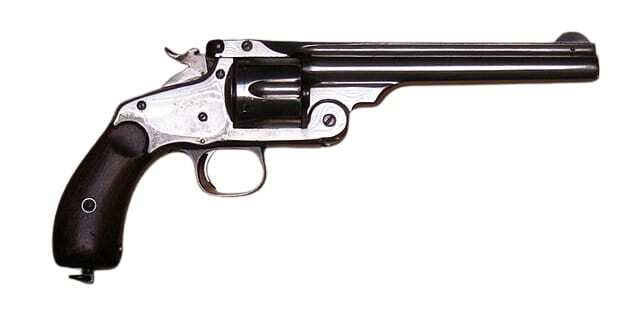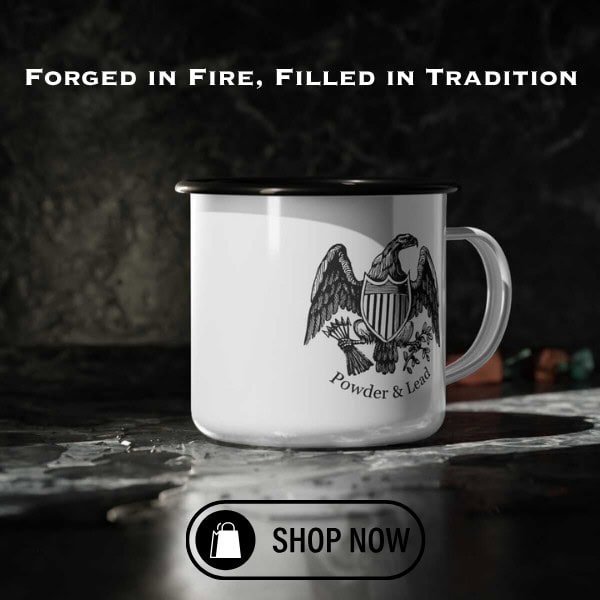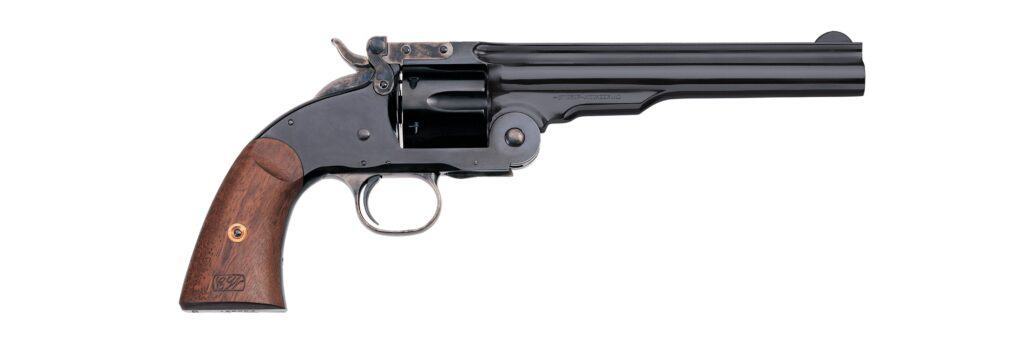
The Schofield Revolver
The Schofield Revolver, a distinctive firearm of the 19th century, offers a compelling study in the evolution of firearms manufacturing. This single-action, top-break revolver, named after Major George W. Schofield, saw extensive use in the Western frontier and military arenas of the United States. It holds a significant place in the annals of American gun-making history and was among the most advanced firearms of its time.
Development and Manufacture of the Schofield Pistol
The story of the Schofield Revolver begins in the late 1860s with Smith & Wesson, a renowned American firearms manufacturing company established in 1852 by Horace Smith and Daniel B. Wesson. Smith & Wesson, based in Springfield, Massachusetts, already had a reputation for producing innovative and reliable firearms.
The development of the Schofield Revolver is directly linked to the Model 3, the Smith & Wesson's first cartridge revolver, introduced in 1869. The Model 3 was the direct predecessor to the Schofield and was also known as the .44 American model due to its proprietary .44 S&W American cartridge.
In the early 1870s, Major George W. Schofield, then serving in the 10th Cavalry of the U.S. Army, proposed design modifications to the Model 3 to better suit the cavalry's operational needs. His changes primarily revolved around the revolver's reload mechanism. Schofield's revised design allowed the revolver to be opened and ejected spent cartridges simultaneously using just one hand – a critical feature for soldiers on horseback.
Smith & Wesson accepted Schofield's suggested improvements and incorporated them into their manufacturing process. In 1875, the modified design was adopted by Smith & Wesson, resulting in the birth of the Schofield Revolver, also known as the Model 3 Schofield. The original patent, dated June 20, 1871, listed George W. Schofield as the inventor.
Different Models and Production Details
The Schofield Revolver was produced in two main variants – the 1st Model Schofield (Model 3 Second Issue), produced between 1875 and 1877, and the 2nd Model Schofield (Model 3 Third Issue), manufactured from 1877 to 1878.
The 1st Model Schofield bore similarities to the original Model 3, with differences primarily in the barrel latch and ejector system. Approximately 3,000 units of the 1st Model Schofield were produced.
The 2nd Model Schofield featured an improved latch assembly and was more streamlined than its predecessor. Approximately 6,000 units of the 2nd Model Schofield were manufactured. The total production of Schofield Revolvers was thus roughly around 9,000 units, making them a relatively scarce item in the world of antique firearms today.
Use of the Schofield Pistol
The Schofield Revolver was adopted by the U.S. Army in 1875, and it became a standard sidearm for U.S. Cavalry troopers. While it was primarily utilized by the U.S., there were instances of usage by other countries, notably Russia, which purchased significant quantities of the original Model 3 and the Schofield.
A significant appeal of the Schofield was its user-friendly design, specifically its ease of reloading. The top-break action, in which the barrel and cylinder pivoted downward to expose the cylinder's rear for reloading, made the Schofield ideal for cavalry units. It was a significant advancement over the existing cap and ball revolvers, which required more intricate steps to reload.
Cartridges and Performance
The Schofield Revolver was chambered for the .45 Schofield, also known as
the .45 S&W. This cartridge was a shorter version of the .45 Colt, which was the standard round used in the Colt Single Action Army revolver, the Schofield's main competition. The .45 Schofield fired a 230-250 grain bullet at around 650-700 feet per second, providing effective performance for close-quarters combat typical of the era.
The Schofield's Predecessors and Contemporaries
The primary predecessor to the Schofield Revolver was the Smith & Wesson Model 3, which laid the groundwork for the Schofield's design. The Model 3 was a significant departure from the percussion revolvers common in the mid-19th century, such as the Colt 1851 Navy and 1860 Army models. These earlier models used loose black powder, a separate ball, and a percussion cap for each chamber, making them slow and cumbersome to reload.
In contrast, the Model 3, and subsequently the Schofield, used metallic cartridges, a significant leap forward in firearms technology that allowed much faster reloading. Despite this advancement, the Schofield had stiff competition from the Colt Single Action Army revolver, also known as the Peacemaker. Adopted by the U.S. military in 1873, the Colt SAA was chambered in .45 Colt and used a different, albeit slower, loading system that didn't expose the cartridges to the elements as much as the top-break design.
Conclusion
The Schofield Revolver, with its advanced design, represented a significant development in the evolution of firearms. It bridged the gap between the cap and ball era and the cartridge age, introducing new technology that set the stage for future developments in firearms design.
Although it was only produced for a few years, the Schofield Revolver's legacy endures in its influence on the firearms industry and its role in the history of the American West. Today, replicas of the Schofield Revolver are produced for historical enthusiasts, cowboy action shooting participants, and film productions, maintaining the Schofield's iconic status in the pantheon of classic firearms.
The editors are unaware of any dedicated Schofield forums, but the Smith & Wesson forum can be found here.
If you know of any forums or sites that should be referenced on this listing, please let us know here.




